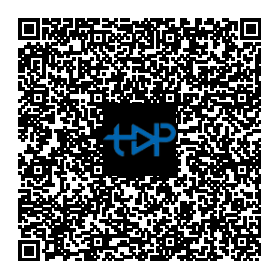SMT / SMD Component Packages
----an overview of the different SMD component packages used for surface mount technology, SMT components
Surface mount technology, SMT includes:
SMT overview
SMD component packages
SMD resistor
SMD resistor markings
MELF SMD resistor
SMD capacitor
Quad Flat Package, QFP
BGA, Ball Grid Array
SMD PLCC
Surface mount technology, SMT components come in a variety of packages.
As surface mount technology has improved many packages have decreased in size. Additionally there is a variety of different SMT packages for integrated circuits dependent upon the interconnectivity required, the technology being used and a variety of other factors.
Standards for surface mount packages
To provide some degree of uniformity, sizes of most SMT components conform to industry standards, many of which are JEDEC specifications. Obviously different SMT packages are used for different types of components, but the fact that there are standards enables activities such as printed circuit board design to be simplified. Additionally the use of standard size packages simplifies the manufacture because pick and place machines can use standard feed for the SMT components, considerably simplifying the manufacturing process and saving costs.
The different SMT packages can be categorised by the type of component, and there are standard packages for each.
Passive rectangular components
These SMT components are mainly resistors and capacitors which form the bulk of the number of components used. There are several different sizes which have been reduced as technology has enabled smaller components to be manufactured and used.
Of these sizes, the 1812, and 1206 sizes are now only used for specialized components or ones requiring larger levels of power to be dissipated The 0603 and 0402 SMT sizes are the most widely used.
Tantalum capacitors SMD packages
As a result of the different construction and requirements for tantalum SMT capacitors, there are some different packages that are used for them. These conform to EIA specifications.
Semiconductor SMD packages
There is a wide variety of SMT packages used for semiconductors including diodes, transistors and integrated circuits. The reason for the wide variety of SMT packages for integrated circuits results from the large variation in the level of interconnectivity required. Some of the main packages are given below
Transistor & diode packages
SMD transistors and diodes often share the same types of package. While diodes only have two electrodes a package having three enables the orientation to be correctly selected.
SMD diodes on a printed circuit
Although a variety of SMT transistor and diode packages are available, some of the most popular are given in the list below.
SOT-23 - Small Outline Transistor: This is SMT package has three terminals for a diode of transistor, but it can have more pins when it may be used for small integrated circuits such as an operational amplifier, etc. It measures 3 mm x 1.75 mm x 1.3 mm.
SOT-223 - Small Outline Transistor: This package is used for higher power devices. It measures 6.7 mm x 3.7 mm x 1.8 mm. There are generally four terminals, one of which is a large heat-transfer pad.
Integrated circuit SMD packages
There are many forms of package that are used for SMD ICs. Although there is a large variety, each one has the areas where its use is particularly applicable.
SOIC - Small Outline Integrated Circuit : This SMD IC package has a dual in line configuration and gull wing leads with a pin spacing of 1.27 mm
SOP - Small Outline Package: There are several versions of this SMD package:
TSOP - Thin Small Outline Package: This SMD package is thinner than the SOIC and has a smaller pin spacing of 0.5 mm
SSOP - Shrink Small Outline Package: This package has a pin spacing of 0.635 mm
TSSOP - Thin Shrink Small Outline Package:
QSOP - Quarter-size Small Outline Package: It has a pin spacing of 0.635 mm
VSOP - Very Small Outline Package: This is smaller than the QSOP and has pin spacing of 0.4, 0.5, or 0.65 mm.
QFP- Quad flat pack: The QFP is the generic type of flat package for ICs. There are several variants as detailed below.
LQFP - Low profile Quad Flat Pack: This package has pins on all four sides. Pin spacing varies according to the IC, but the height is 1.4 mm.
PQFP - Plastic Quad Flat Pack: A square plastic package with equal number of gull wing style pins on each side. Typically narrow spacing and often 44 or more pins. Normally used for VLSI circuits.
CQFP - Ceramic Quad Flat Pack: A ceramic version of the PQFP.
TQFP - Thin Quad Flat Pack: A thin version of the PQFP.
Read more about the QFP - Quad Flat Pack
BGA - Ball Grid Array: A package that uses pads underneath the package to make contact with the printed circuit board. Before soldering the pads appear as solder balls, giving rise to the name.
By placing the pads underneath the package there is more room for them, thereby overcoming some of the problems of the very thin leads required for the quad flat packs. The ball spacing on BGAs is typically 1.27 mm. Read more about the Ball Grid Array
PLCC - Plastic Leaded Chip Carrier: This type of package is square and uses J-lead pins with a spacing of 1.27 mm. Read more about the PLCC Plastic Leaded Chip Carrier
SMD package applications
SMT surface mount technology packages are used for most printed circuit designs that are going to be manufactured in any quantity. Although it may appear there are a relatively wide number of different packages, the level of standardization is still sufficiently good. In any case it arises mainly out of the enormous variety in the function of the components.





